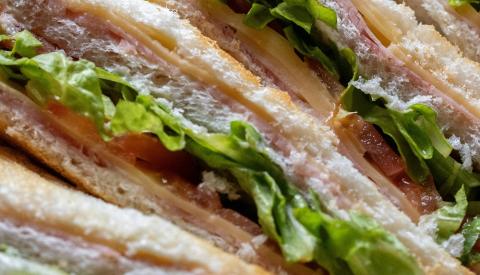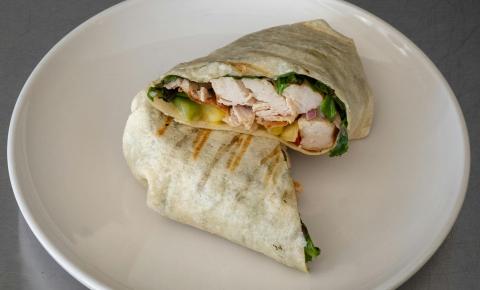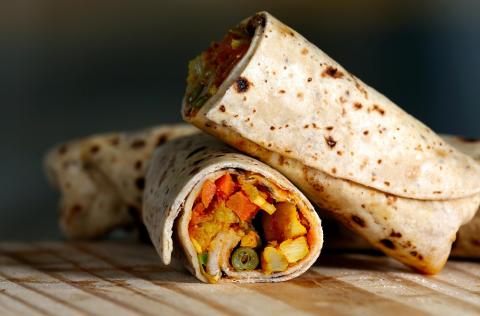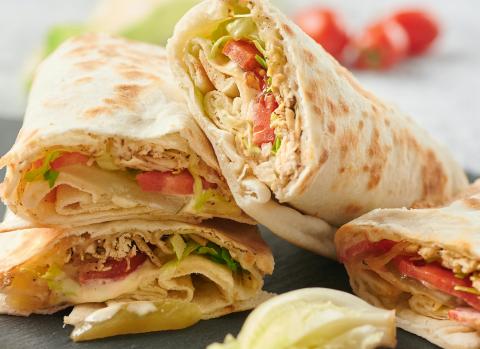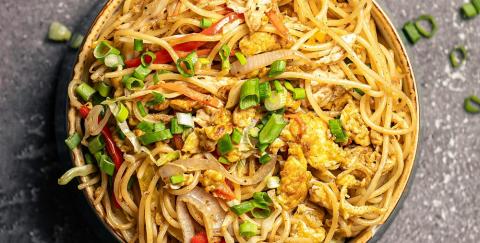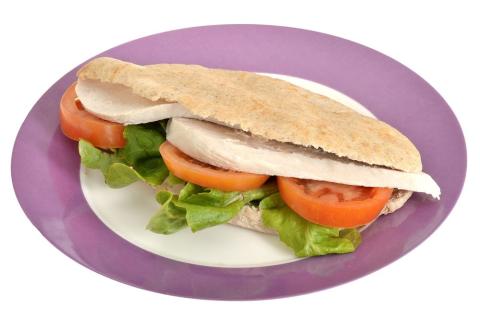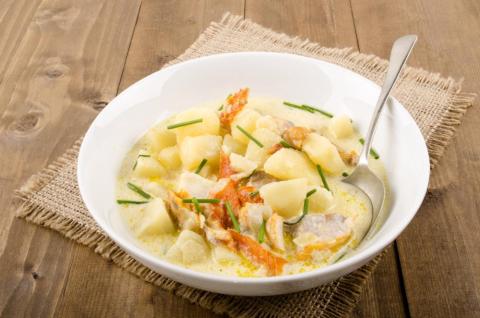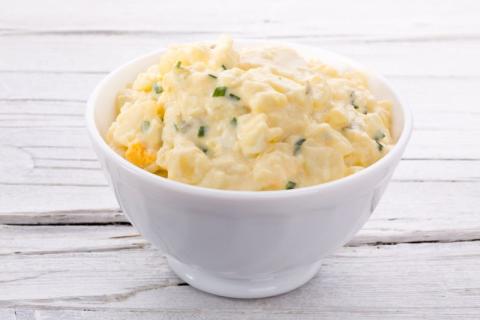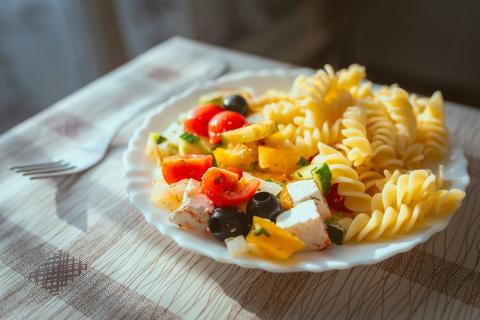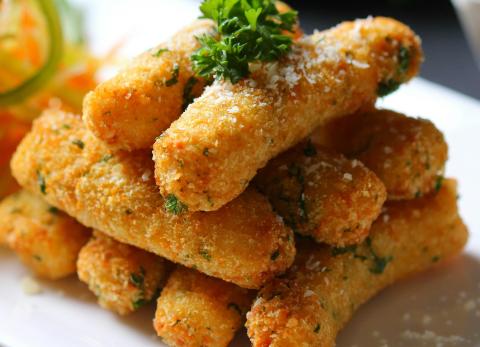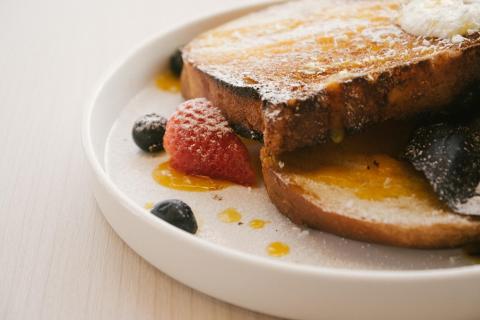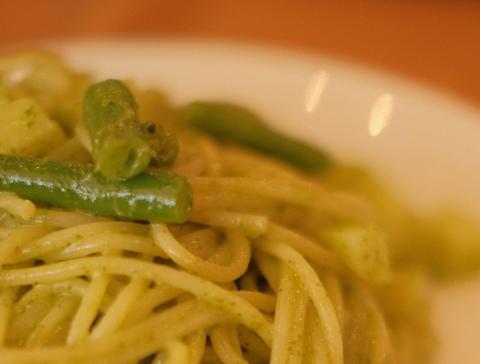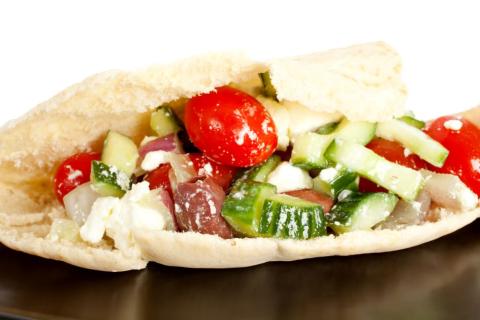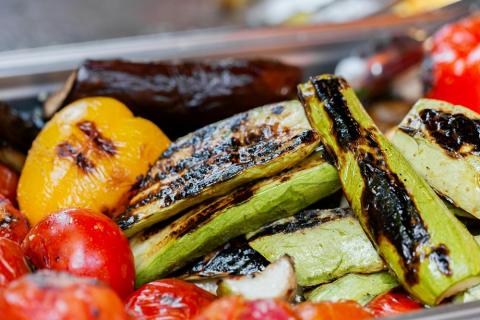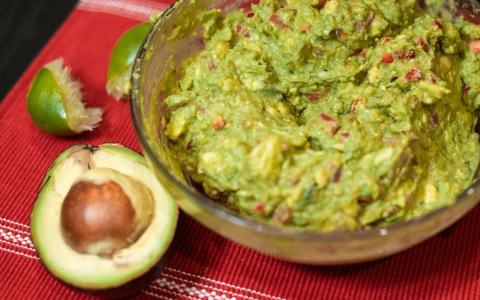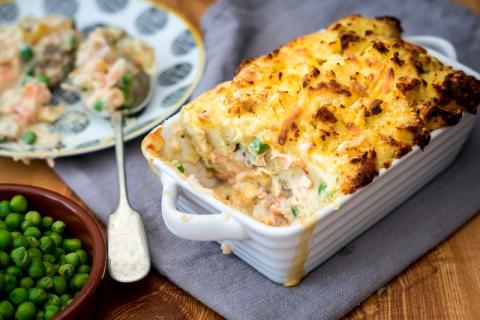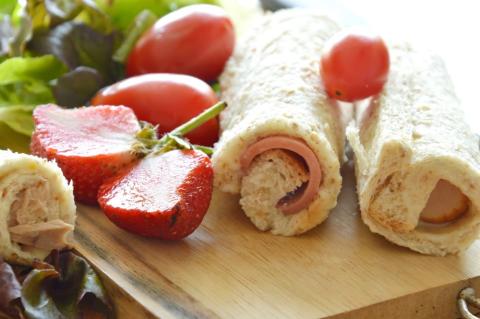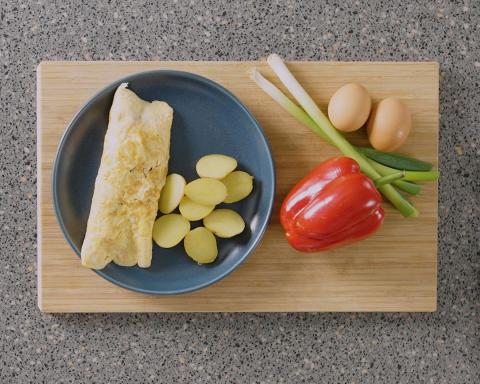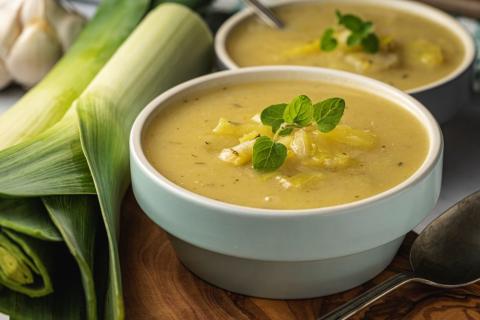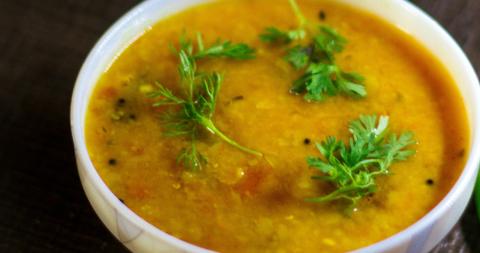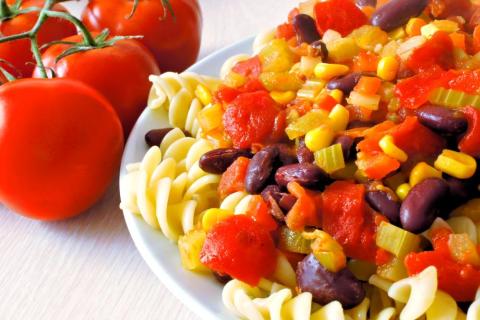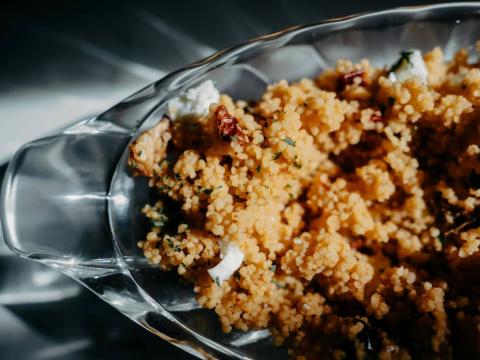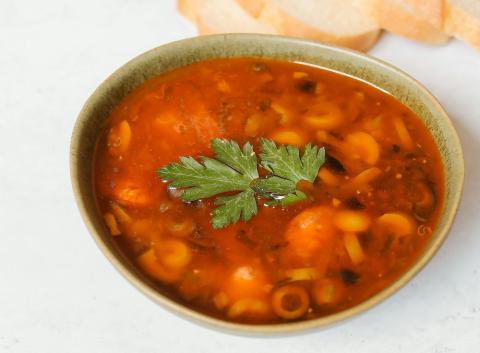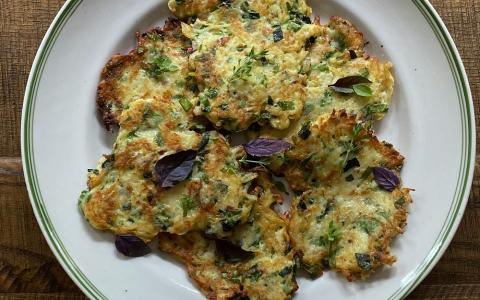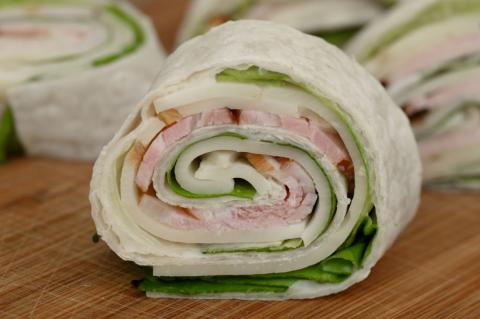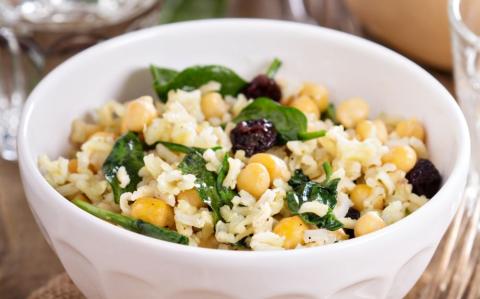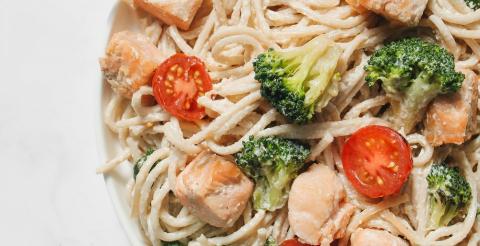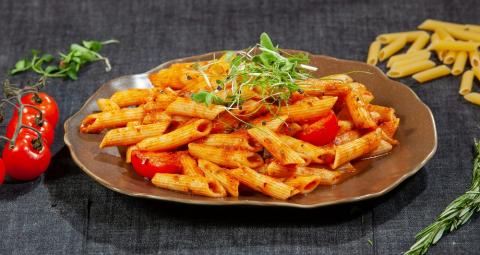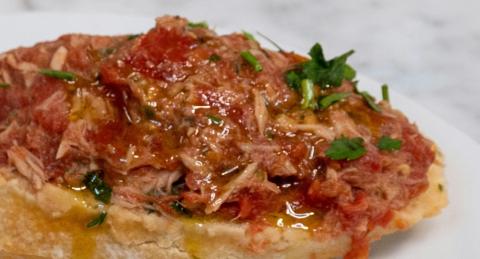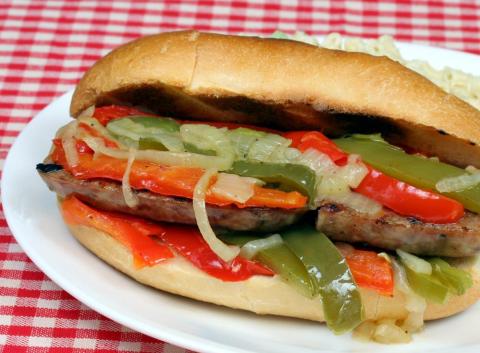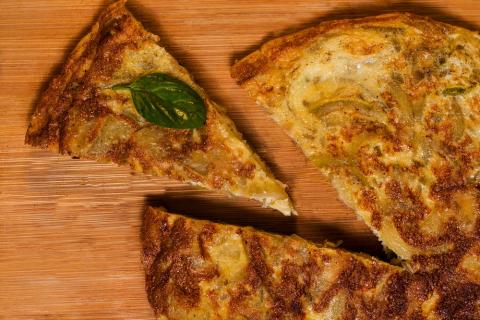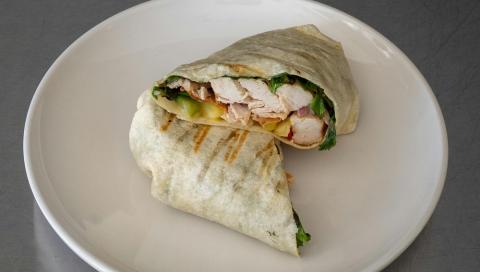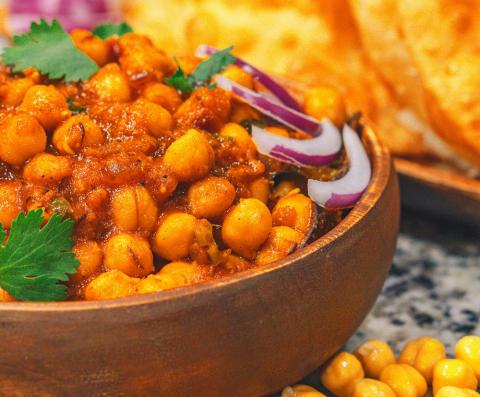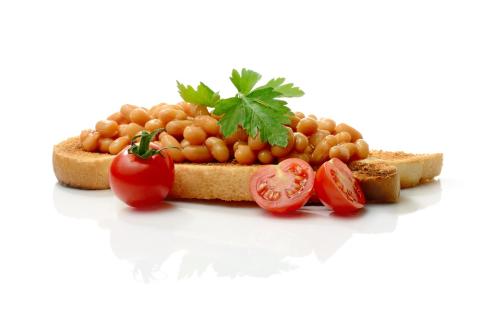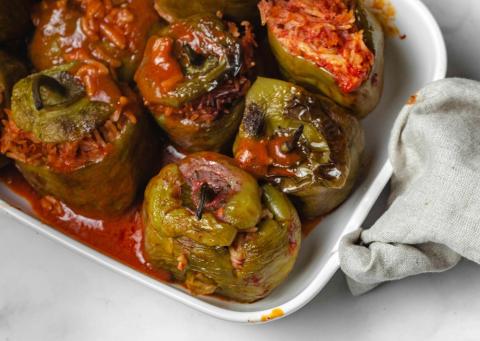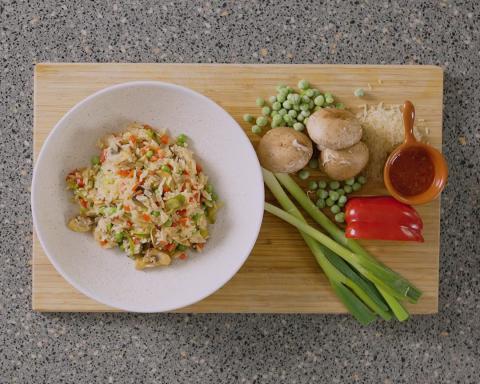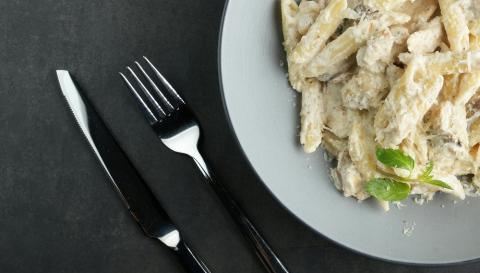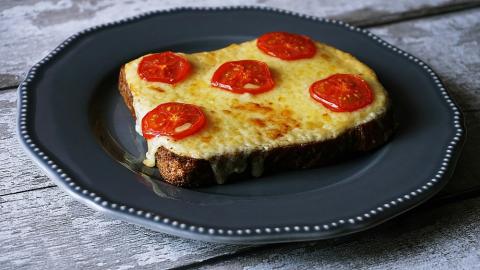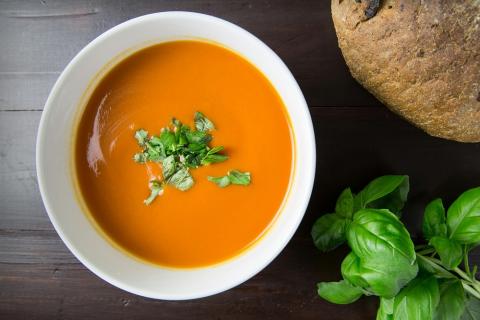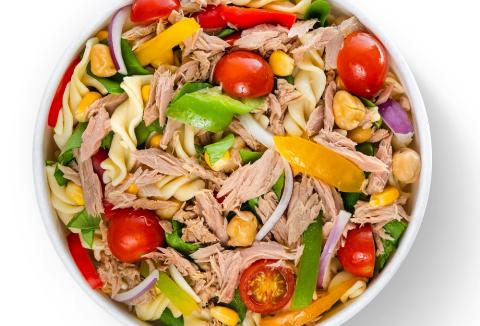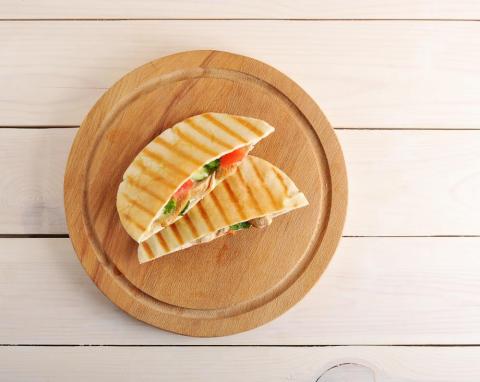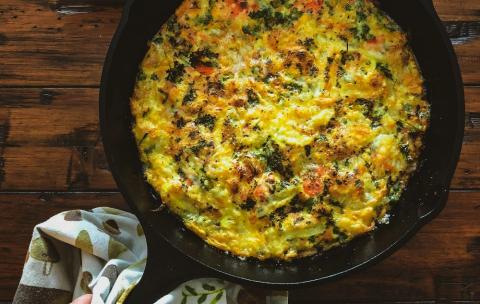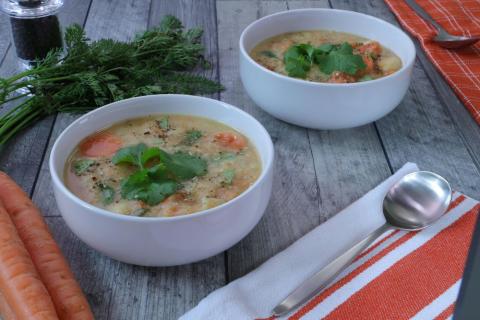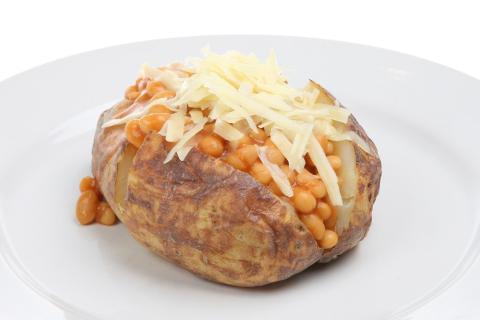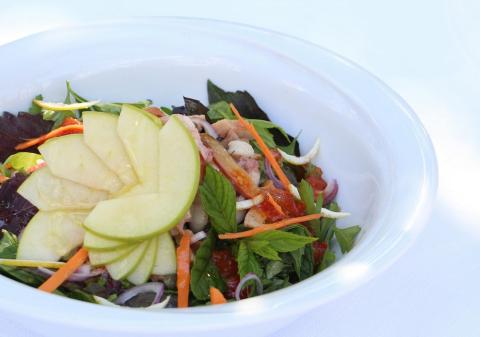- ¼ Pack (125g) Dried Pasta
- 2 Tablespoons (20g) Olive Oil
- 1 Lemon
- 1 (160g) Red Pepper
- 8 (120g) Cherry Tomatoes
- 4 (40g) Spring Onions
- ¼ Can (65g) Sweetcorn
- ¼ Can (60g) Kidney Beans
Ingredients
Allergy Disclaimer
Always check the label of each ingredient for allergy warnings.
Method
- Cook the pasta in fast-boiling water until just tender but with ‘bite’ (al dente).
- Drain the pasta and rinse in cold water. Stir in 1 tablespoon olive oil.
- Prepare the vegetables. Wash the pepper, tomatoes and spring onions. De-seed, slice and dice the pepper. Quarter the tomatoes and slice the spring onions. Add all vegetables to the pasta. Drain the kidney beans and add to the pasta with all the other vegetables.
- Squeeze the lemon and add the juice to the remaining olive oil. Whisk together, or mix with a fork, and add to the pasta.
- Toss the ingredients together. Serve immediately or use as a lunchbox meal.
Time Saver Tips
It’s a good idea to prepare the veg while the pasta is bubbling away.
Cost Saver Tips
You can use regular sized tomatoes instead of cherry tomatoes and red onion instead of spring onion. You could also use any vegetables you have left over - try with grated carrot or peas.
Tips for Kids
Why not try using their favourite pasta shapes, such as twirls or shells? You could also give wholemeal pasta or spaghetti a go, or make it with noodles or rice, too. Follow the cooking times on the packet for wholemeal pasta noodles or rice. One way to give this extra texture is by popping in some pulses, such as canned kidney beans or chickpeas. Or you could even try adding a hard-boiled egg.
Nutritional Information
Based on a single serving of 160g (% of an adult's reference intake)
Energy
180 kcals ( 9 %)
758 kJ ( 9 %)
Fat
0.9 g ( 3 %)
Saturates
27.9 g ( %)
Sugar
5.1 g ( 6 %)
Salt
0 g ( 0 %)
Detailed nutritional information
| Per 100g | Per 160g serving | |
|---|---|---|
| Energy Kcals | 113 | 180 |
| Energy Kj | 474 | 758 |
| Protein | 3.2 g | 5.1 g |
| Total Fat | g | g |
| Saturated Fat | 0.6 g | 0.9 g |
| Carbohydrates | 17.4 g | 27.9 g |
| Total Sugars | 3.2 g | 5.1 g |
| NSP Fibre | 2.3 g | 3.6 g |
| Sodium | 2 mg | 4 mg |
| Salt | 0 g | 0 g |
Find out about nutritional labelling
Nutrition labels on the front of packaging
- Most of the big supermarkets and many food manufacturers display nutritional information on the front of pre-packed food.
- Front of pack nutrition labels provide information on the number of grams of fat, saturated fat, sugars and salt and the amount of energy (in kJ and kcal) in a serving or portion of a recipe.
- The labels also include information about reference intakes (expressed as a percentage) which are guidelines about the approximate amount of particular nutrients and energy required for a healthy diet.
- The colour coding tells you at a glance if the food has high (red), medium (amber) or low (green) amounts of fat, saturated fat, sugars and salt.
- The more greens on the label, the healthier the choice
- Amber means neither high nor low, so you can eat foods with all or mostly ambers on the label most of the time.
- Reds on the label means the food is high in that nutrient and these are the foods we should cut down on. Try to eat these foods less often and in small amounts.
Food shopping tips
If you’re trying to decide which product to choose, check to see if there's a nutrition label on the front of the pack. This will help you to quickly assess how your choices stack up. You will often find a mixture of red, amber and green colour coding for the nutrients. So when you're choosing between similar products, try to go for more greens and ambers and fewer reds if you want to make a healthier choice.
 Activities & Play
Activities & Play Behaviour
Behaviour Childcare
Childcare Development & Growing Up
Development & Growing Up Family, Friends & Relationships
Family, Friends & Relationships Feeding Your Baby
Feeding Your Baby Food & Eating
Food & Eating Health & Safety
Health & Safety Mental Health & Wellbeing
Mental Health & Wellbeing Money & Work
Money & Work Online Behaviour & Safety
Online Behaviour & Safety Pregnancy & First Days
Pregnancy & First Days School & Education
School & Education Sleep
Sleep


